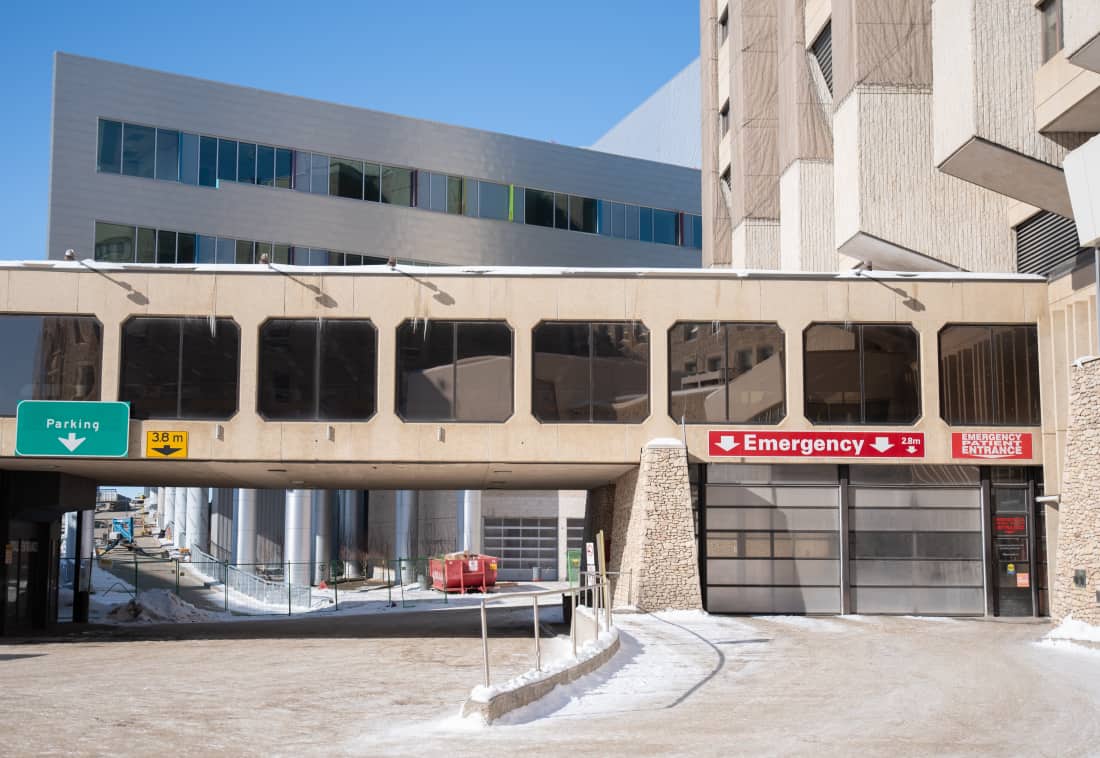
The numbers in Royal University Hospital’s emergency room fluctuate, but each year, between 5,000 and 9,000 individuals find themselves in the waiting room in the midst of a mental-health crisis.
And according to a CBC article published in 2017, roughly 10 per cent of these patients will leave without receiving treatment.
The RUH ER is a chaotic milieu of sick and injured bodies and medical personnel scurrying between curtains and stretchers rattling across the floor from the ambulance bay. It is bright, loud and crowded — not an ideal environment for someone experiencing a crisis. Yet, mental-health patients can be left waiting there for hours.
Earlier this month, CBC reported that the relatively new seven-bed unit specifically designed for mental-health emergencies will close its doors later this year — the exact date undetermined. The unit was designed to divert distressed individuals to a quiet, mental-health-focused area for treatment and triage, but it has perhaps failed patients since its inception. Mental-health activists say it was understaffed and often used as general overflow.
The hospital’s execution of this unit appears to be an expensive disaster, with over $1,000,000 being wasted on a space that has been heavily criticized by advocates and the public.
The Saskatchewan Health Authority claims that patients experiencing mental-health emergencies are triaged and treated in other accommodating departments and quiet rooms tucked away in the corners of the hospital. But exactly how swift is this response?
Last year, I found myself escorting a loved one into the RUH ER. He was in a prolonged mental-health crisis that involved anxiety-induced dissociation and suicidal ideation. He was triaged and questioned, and we were left to sit in the busy waiting room among moaning patients. A loud, big-screen television hung from the wall while fluorescent lights buzzed overhead.
We sat there for four hours without any intervention from medical staff on the floor. At this point, his agitation increased — had he been alone, it is likely he would have been one of the 10 per cent that walk out the front doors.
The Canadian Triage and Acuity Scale, or CTAS, is used in ER departments to assess who needs care first. The guidelines for reassessment vary for levels of urgency but should not exceed 120 minutes, even for non-urgent cases. He should have been checked on multiple times.
After a short stint in nursing school, I am fairly cognizant of how these units work, and I have a working knowledge of assessments, medications and protocol. While I’m no expert, I am more familiar with health care than most of the general population.
So in situations like this, I had advantages that many do not: an idea of how the system is navigated, the ability to keep my frustrations from boiling over and the knowledge of how I can better advocate for care.
If I had been naive, our stay on the plastic chairs in the buzzing waiting room would have likely lasted exponentially longer. It wasn’t long after I spoke up and advocated for a safer and quieter space that we were moved to a quiet room and he was medicated. After this move, the situation substantially improved, yet the wait was not over. It would be nearly 15 hours before he was assessed by a psychiatry resident.
Wait times in ERs creep up for various reasons. Life-threatening conditions, like cardiac arrests and strokes, are obviously funnelled through the system with no wait. That’s what these facilities are designed for — life-saving measures. If there is an increase in these level 1 cases, then the wait times for those further down on the severity scale will also increase.
Oftentimes, many visitors to the ER should not be there at all, further complicating the problem.
Mental-health emergencies muddy up these waters. These crises are oftentimes life-threatening, and yet, many of these patients are treated like lowest-level, non-urgent patients. Mental-health crises including plans for suicide and moderate to high anxiety levels should fall into levels 2 or 3, according to the CTAS guidelines.
In the end, the failed mental-health unit, long wait times and the patients who leave without treatment represent only a fraction of just how shattered mental-health care is in this country. The current system fails to accommodate both physically ill patients and those with mental-health concerns, doing a disservice to both groups. It’s clear we need considerable health-care restructuring and not just BandAid solutions.
—
Erin Matthews / Opinions Editor
Photo: Riley Deacon / Photo Editor